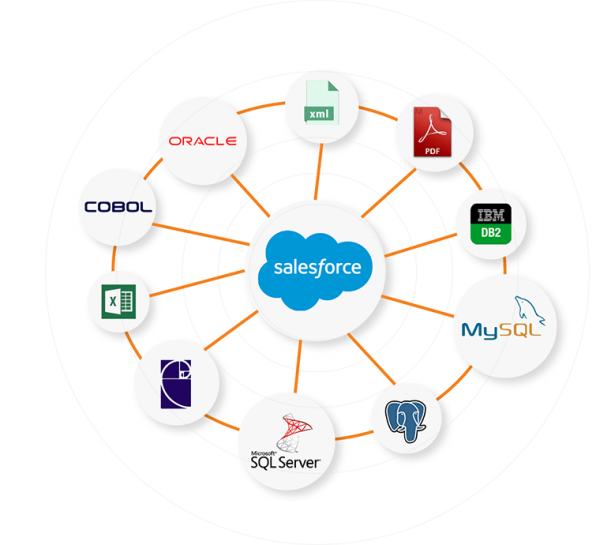With data becoming the new business currency, your CRM application and data are the most important assets that you can leverage. Leading the CRM pack is Salesforce, which has a staggering market share of more than 20%.
The CRM application and data can provide you with valuable insights that can impact your sales, customer satisfaction, and overall revenue. That’s why, companies all over the world are investing heavily in maximizing their CRM utilization.
Plus, businesses have realized that integrating their apps and data siloed in numerous locations can offer more opportunities for insights and help them achieve a 360-degree view of their customers.
Source: Astera
Whether you’re trying to connect data between your several Salesforce instances (also known as Salesforce Clouds), or integrating with on-premise applications like Enterprise Resource Planning (ERP) and Configure Price Quote (CPQ), you must keep certain factors in mind. In this article, we have compiled six things that you should consider for Salesforce data integration.
1. Batch vs Real-Time
You need to figure out whether you should sync data and applications in real-time. Think about bandwidth constraints and limiters that may impact your effective utilization. Often, you may go for a hybrid approach that uses both batch and real-time sync.
2. Code vs No Code
It is important to clearly identify the users who will set up and perhaps maintain your integrations. You need to determine whether you should rely on expensive coding specialists. Alternatively, you may opt for simplified UI interfaces that involve no coding as they are easier and quicker to implement and maintain. Also, consider your business users and the level of self-service capabilities that are available to serve their needs.
3. On-premise, Cloud, or Hybrid
The next consideration revolves around where you will store your applications and data. Will you store them in the cloud or in local repositories? You should also keep the future requirements in mind when choosing the right location for your data integration.
4. 360-degree Customer View
To understand the importance of having a 360-degree customer view, you should consider which apps and data repositories store your critical customer data. Plus, realize who will need access to that data and how. You also have to consider the kind of connectivity and oversight that is needed.
5. Compliance with Regulations
Your customer information is already very sensitive, but it becomes more sensitive when it includes financial data and their personal data from social media, healthcare, and other apps. So, you need to devise a robust governance and compliance plan for your datasets.
6. Future-Proofing
Along with Salesforce application integration, enterprise data management also includes data quality, master data management (MDM), governance, analytics, and data cataloging. When bringing in more data from different locations, you have to keep track of what you already have and what is available. That’s why you need an intelligent data catalog that provides order and visibility to the data available for your users.
You need to consider whether you need the best platform for a specific solution. Alternatively, you may opt to leverage a platform that provides greater ease of use and implementation. You also need to think about the importance of future-proofing your investment.
Conclusion
There you have it: 6 key considerations that your company should have as you think about Salesforce data integration.
Before you integrate Salesforce application data, it is critical to have a data quality plan so that you’re certain about the integrity of your findings. You need to consider the kind of MDM solution you are using to ensure you aren’t double or triple counting the same customer because of slight variations in nomenclature.
Astera Centerprise adopts a unique approach to streamline the process of Salesforce data integration. It empowers you to connect to Salesforce just as you’d connect to any other relational database, without the hassle and complexity of making API calls.








